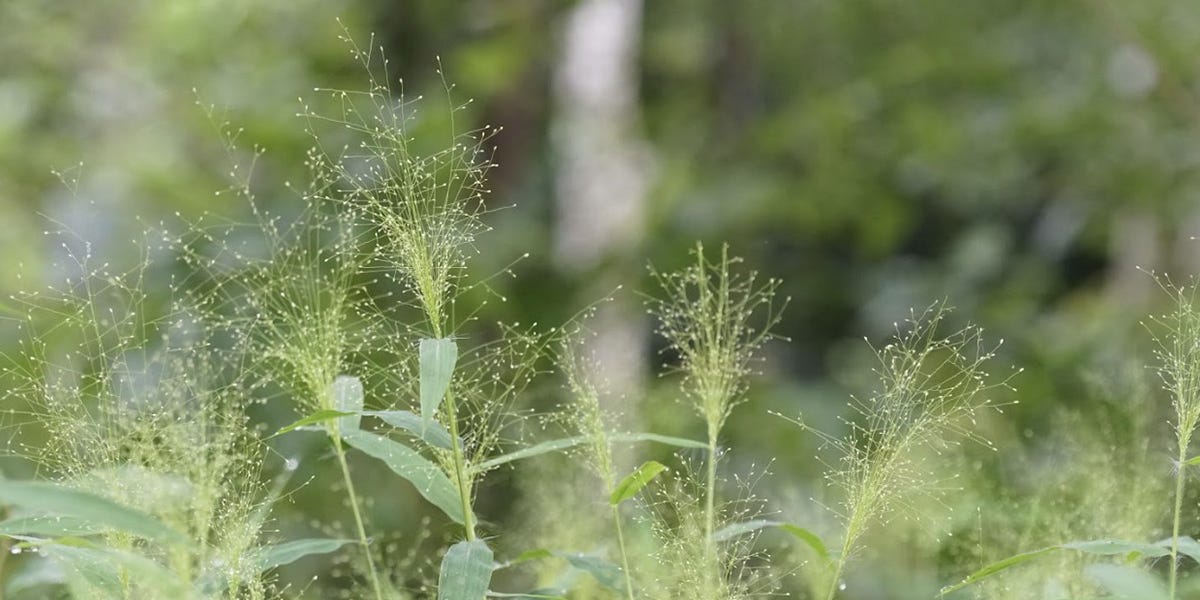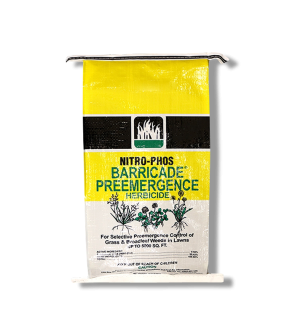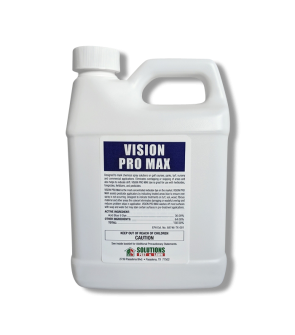Witchgrass Control
Most Effective Products
Witchgrass Control: How To Get Rid of Witchgrass
Witchgrass is a summer annual grass that can range in height between 7 to 31 inches tall and is hairy and appears in clumps. This problematic weed gets its name due to its appearance: the hairy stem and large puffy seed head resemble the features of a storybook witch.
Witchgrass is a weed that is predominantly located in the eastern part of the United States. Witchgrass tends to enjoy taking over disturbed areas of land and any under-grown soil area like fields, and dry ditches. The plant reproduces by seed and by rhizomes. Hand-pulling these weeds are not an effective means of control as the rhizomes will break off into the ground, eventually resprouting the weed once again.
If you notice a Witchgrass problem on your lawn, the following guide can help. Our lawn care experts have put together this DIY guide to show you exactly what needs to be done to remove Witchgrass from your lawn using our professional herbicide recommendations. Follow the step-by-step instructions below and you are guaranteed to eliminate Witchgrass fast and at an affordable price.
Identification
Witchgrass is a grass that is tufted at the base and has a clumping habit. Their leaves and stems are covered with long hairs and their flower head is a fuzzy panicle that rises above the rest of the plant and contains a point that resembles a witch's broom, which is how the weed earned its name.
When mature, Witchgrass can reach up to 3 feet tall and form in bushy clusters on land where they have been established.
Use our description and image above to help you to identify witchgrass on your lawn. If you are having trouble identifying the weed, contact us and we will properly ID the plant for you as well and offer herbicide product recommendations for control.
Inspection

Where to Inspect
Conduct a thorough inspection of your lawn or landscape to see where the witchgrass is growing. Witchgrass has a preference for areas with full sun where the conditions are dry and arid. Most growth and development takes place during the summer and early autumn. Witchgrass can withstand periods of hot, dry weather.
What To Look For
As mentioned in identification, you're going to want to look for grass that has a hairy stem and a large puffy seedhead. Witchgrass will be hard to miss on a lawn or landscape because it will stand out amongst uniform grass.
Treatment
Always wear the proper safety equipment any time you handle herbicide chemicals. We recommend wearing jeans and a long sleeve shirt along with gloves and goggles.
Witchgrass is best removed manually but if you have a large infestation of witchgrass you are dealing with, you may not have the time or the energy to be pulling or cutting down all the witchgrass. This is when chemical control would be best. The top product we recommend for witchgrass is Eraser 41%. Eraser is a Glyphosate-based product that is non-selective, killing all plants that come in contact with it.
Step 1: Measure and Mix Eraser

Eraser contains 41% Glyphosate as an active ingredient and works systemically through the foliage down to the root killing the entire plant within days. Keep in mind that Eraser is a non-selective herbicide and thus is a kill-all treatment. Use Eraser as a spot treatment and be careful not to get the chemical on any of your desired vegetation. An indicator dye like Vision Pro Max mixed with the spray application will aid you in keeping track of where you spray so you don't accidentally spray on your desired grass.
Calculate the square footage of the treatment area to determine how much Eraser you need. To do this, you will need to measure and multiply the area length times the width (length x width = square footage). For spot treatments, 2.5 oz. of Eraser in a gallon of water can treat 300 sq. ft. So for example, if you measured a 1,200 sq. ft. area for treatment, you would need 10 oz. of Eraser mixed in 4 gallons of water.
Mix the appropriate amount of Eraser into your sprayer with Vision Pro Max indicator dye (at a rate of 6 to 10 fl. oz. per 100 gallons of spray solution) to help you keep track of where you spray. Agitate the sprayer and you are ready to spray.
Step 2: Spot Treat the Witchgrass with Eraser

With a fan tip nozzle, spot spray the Witchgrass to ensure it is evenly coated. Eraser is a non-selective herbicide and will kill whatever you spray so you must be very careful when applying Eraser if Witchgrass is near your desired grass. In some cases, it may be better to paint the product on the Witchgrass with a brush or block the desired grass with a piece of cardboard.
You may need to do repeat applications after 7 to 10 days if the weed is particularly persistent and problematic. Its best to spot treat your problem areas in general. You also want to be careful to not treat newly seeded lawns until they have had a chance to mature. The best way to gauge this is to wait until you have mowed your new lawn at least three times. Otherwise, the weed killer may harm the tender new grass as well.
Prevention

While Barricade is not specifally labeled for witchgrass, it is a pre-emergent herbicide that prevents various types of weeds from emerging in your lawn. Barricade contains Prodiamine, a highly effective active ingredient that controls and prevents seeds from sprouting. Depending on your turfgrass type, Barricade can be applied at a rate from 1.5 pounds to 4 pounds per 1,000 sq. ft. (read the label to find the proper rate for your turf type). Measure the square footage of your lawn to determine how much Barricade you will need.
Once you have measured the appropriate amount based on your calculations, load the Barricade granules at the right calibration setting into a hand or push spreader and then apply the granules until your lawn is covered evenly to get a uniform application. A push spreader is preferred if you have a large property to spread the granules on while a hand spreader, like the Plantmates Scatterox, is better for more precision and control over where you want to spread the granules. After broadcasting the granules, you should then water in and activate them with at least 0.5 inches of water.
You can also prevent the return of Witchgrass after it has been controlled with cultural practices that will hinder the redevelopment. A lush and healthy lawn is less prone to invasion by the Witchgrass plant. Witchgrass grass grows best in poor soil and disperses an allelopathic chemical that keeps wanted plants from growing.
Properly fertilize your landscape at the best time recommended for your particular grass. Mow your grass regularly and at the right height. Witchgrass thrives on sunlight so keeping a lush lawn shades out weed seeds which hinders the growth of the weed. Reseed thin patches of turf in the lawn as an effective means of witchgrass control. Part of effective witchgrass control includes proper fertilization so take a soil test to determine which amendments are necessary for thick, healthy turfgrass on your lawn. Witchgrass does not grow well in landscapes that have high nitrogen in the soil.
Key Takeaways
- Witchgrass is a prolific grassy weed with a unique puffy seedhead and the ability to spread quickly via seed disbursement by the wind.
- Our top recommendation to treat Witchgrass is a post-emergent treatment of Glyphosate or a pre-emergent application of Barricade.
- Prevent witchgrass reestablishment by maintaining a good lawn care schedule which involves mowing, watering, and fertilization at optimum times.













































































































































































































































































































































































































































































































































